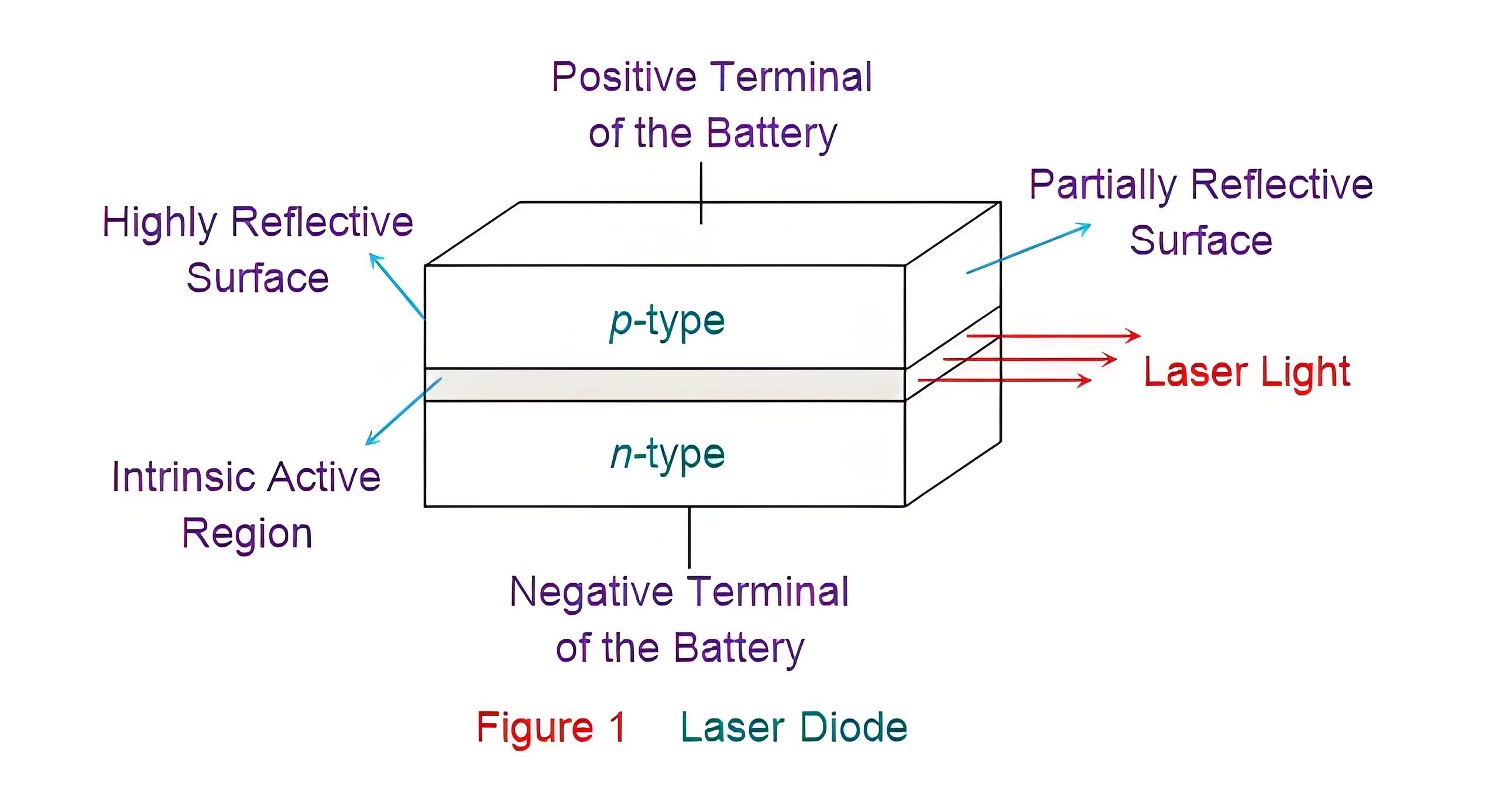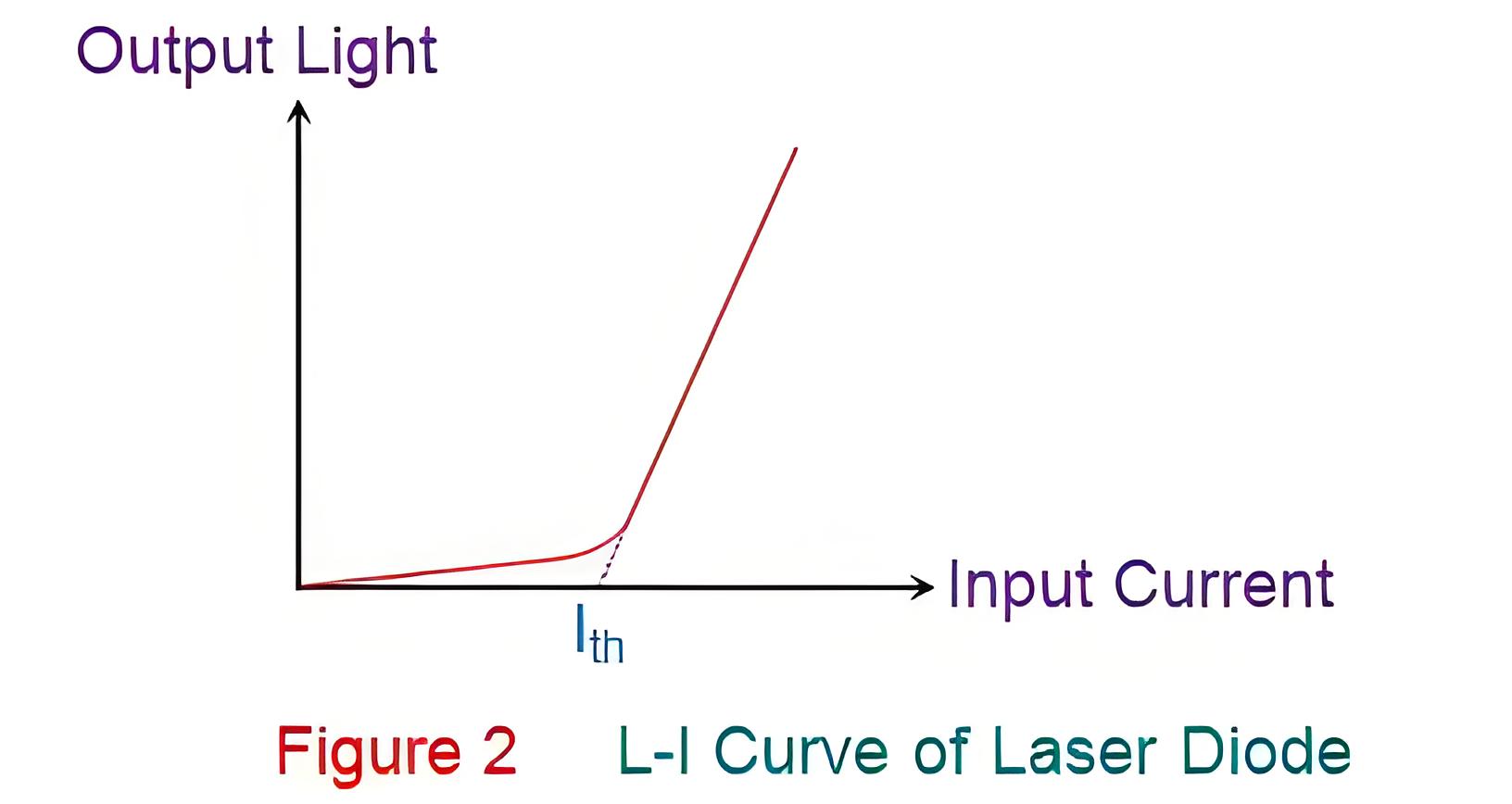What is a Laser Diode?
What is a Laser Diode?
Laser Diode Definition
A laser diode is defined as a diode that can generate laser light when electrically pumped with current. It consists of a p-n junction with an additional intrinsic layer in between, forming a p-i-n structure. The intrinsic layer is the active region where the light is generated by the recombination of electrons and holes.
The p-type and n-type regions are heavily doped with impurities to create excess carriers, while the intrinsic layer is undoped or lightly doped to allow for optical amplification. The ends of the intrinsic layer are coated with reflective materials, one fully reflective and one partially reflective, to form an optical cavity that traps the light and enhances the stimulated emission.

Stimulated emission occurs when an incoming photon causes an excited electron to drop to a lower energy level and emit another photon that is identical to the incoming one in frequency, phase, polarization, and direction. This way, the number of photons in the cavity increases exponentially, creating a coherent beam of light that exits through the partially reflective end.
The wavelength of laser light varies with the semiconductor material’s band gap and the optical cavity’s length, enabling emission across the electromagnetic spectrum, from infrared to ultraviolet.
Operational Mechanism
A laser diode works by applying a forward bias voltage across the p-n junction, which causes current to flow through the device. The current injects electrons from the n-type region and holes from the p-type region into the intrinsic layer, where they recombine and release energy in the form of photons.
Some of these photons are spontaneously emitted in random directions, while others are stimulated by existing photons in the cavity to emit in phase with them. The stimulated photons bounce back and forth between the reflective ends, causing more stimulated emission and creating a population inversion, where there are more excited electrons than non-excited ones.
When the population inversion reaches a threshold level, steady-state laser output is achieved, where the rate of stimulated emission equals the rate of photon loss due to transmission or absorption. The output power of the laser diode depends on the input current and the efficiency of the device.
Output power hinges on device temperature; higher temperatures decrease efficiency and raise the threshold current, necessitating cooling systems for optimal performance.
Laser Diodes Types
Laser diodes are classified into different types based on their structure, mode of operation, wavelength, output power, and application. Some of the common types are:
Single-mode laser diodes
Multi-mode laser diodes
Master oscillator power amplifier (MOPA) laser diodes
Vertical cavity surface emitting laser (VCSEL) diodes
Distributed feedback (DFB) laser diodes
External cavity diode lasers (ECDLs)

Laser Diodes Applications
Optical storage
Optical communication
Optical scanning
Optical sensing
Optical display
Optical surgery
Laser Diodes Advantages
Compact size
Low power consumption
High efficiency
Long lifetime
Versatility
Laser Diodes Disadvantages
Temperature sensitivity
Optical Feedback
Mode hopping
Cost
Summary
A laser diode is a semiconductor device that produces coherent light through a process of stimulated emission. It is similar to a light-emitting diode (LED), but it has a more complex structure and faster response time.
A laser diode consists of a p-n junction with an additional intrinsic layer in between, forming a p-i-n structure. The intrinsic layer is the active region where the light is generated by the recombination of electrons and holes.
A laser diode works by applying a forward bias voltage across the p-n junction, which causes current to flow through the device. The current injects electrons from the n-type region and holes from the p-type region into the intrinsic layer, where they recombine and release energy in the form of photons.
Some of these photons are spontaneously emitted in random directions, while others are stimulated by existing photons in the cavity to emit in phase with them. The stimulated photons bounce back and forth between the reflective ends, causing more stimulated emission and creating a population inversion, where there are more excited electrons than non-excited ones.
When the population inversion reaches a threshold level, steady-state laser output is achieved, where the rate of stimulated emission equals the rate of photon loss due to transmission or absorption. The output power of the laser diode depends on the input current and the efficiency of the device.
The wavelength of the laser light depends on the band gap of the semiconductor material and the length of the optical cavity. Laser diodes can produce light in different regions of the electromagnetic spectrum, from infrared to ultraviolet.
Laser diodes are classified into different types based on their structure, mode of operation, wavelength, output power, and application. Some of the common types are single-mode laser diodes, multi-mode laser diodes, master oscillator power amplifier (MOPA) laser diodes, vertical cavity surface emitting laser (VCSEL) diodes, distributed feedback (DFB) laser diodes, external cavity diode lasers (ECDLs), etc.
Laser diodes have a wide range of applications in various fields due to their advantages such as compact size, low power consumption, high efficiency, long lifetime, and versatility. Some of their applications are optical storage, optical communication, optical scanning, optical sensing, optical display, and optical surgery.
Despite their benefits, laser diodes have drawbacks including temperature sensitivity, optical feedback, mode hopping, and high costs.
The Electricity Encyclopedia is dedicated to accelerating the dissemination and application of electricity knowledge and adding impetus to the development and innovation of the electricity industry.













